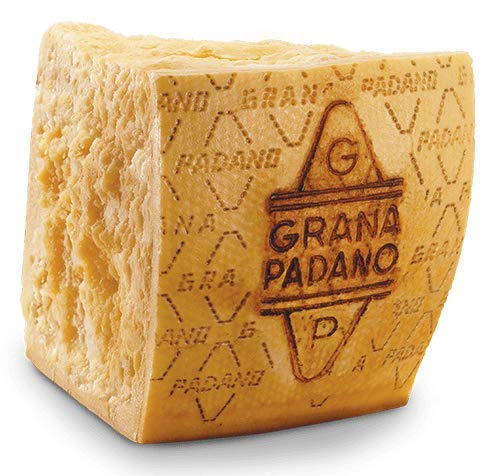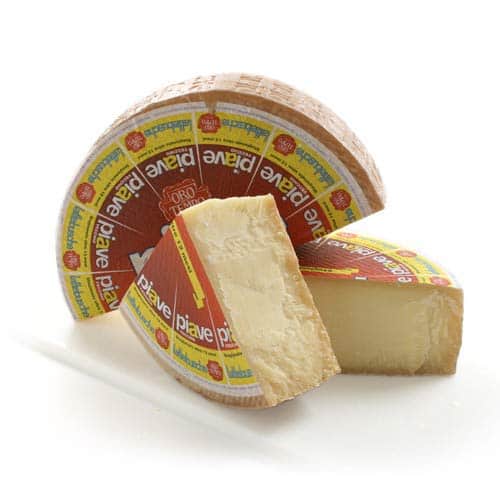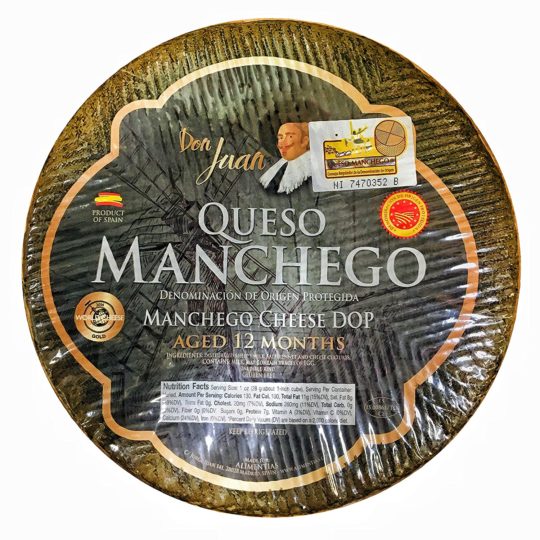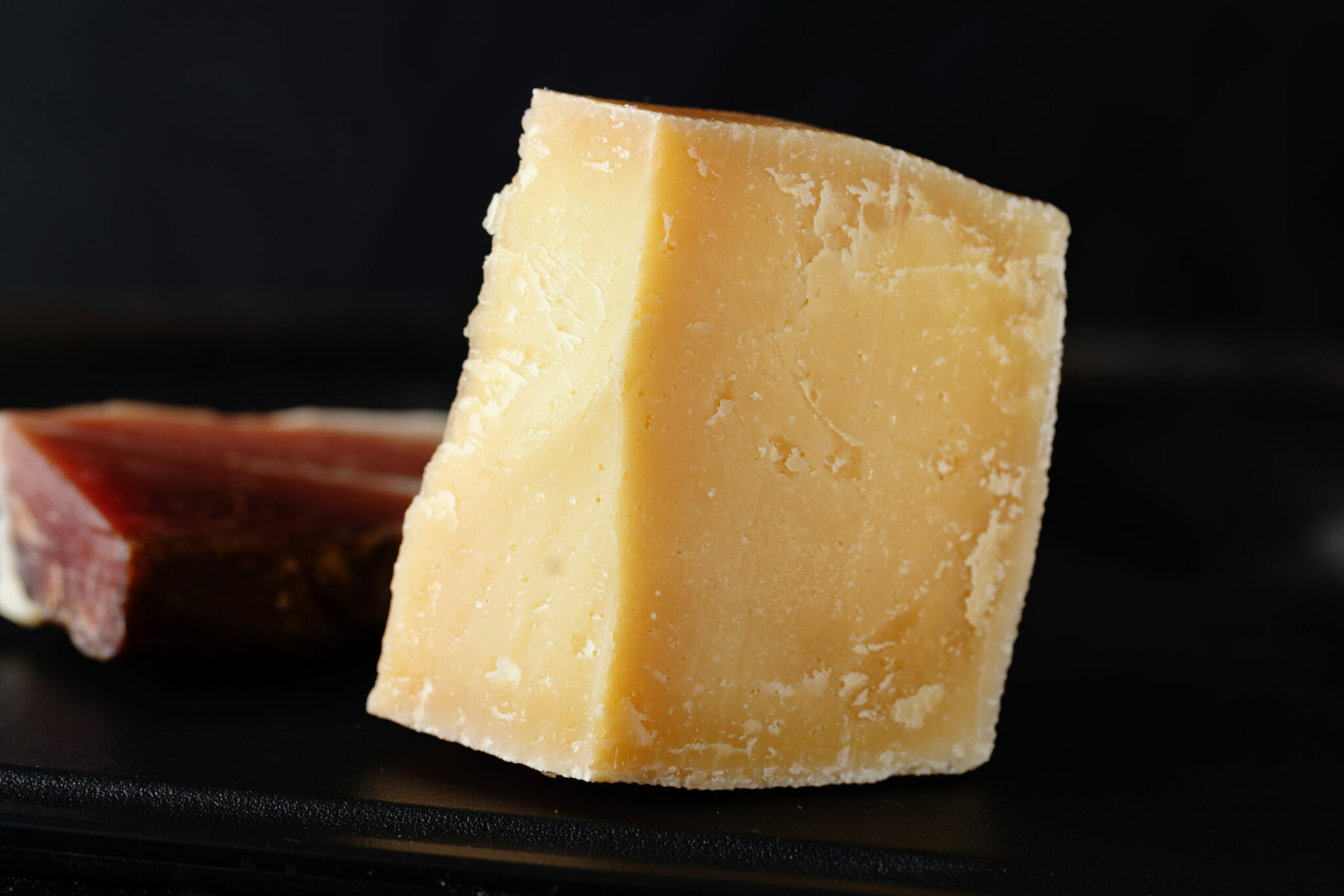Updated on April 9th, 2023
Parmigiano-Reggiano is a traditional, unpasteurized, hard cheese made from skimmed milk gotten from cows. The cheese is produced into a large drum shape with a very hard, yellow to orange rind which is inedible. This crumbly cheese has a fat content of about 28% to 32%, this is lower in fat than most cheeses. Parmigiano Reggiano is used in the kitchen to make grating on pasta, salads, or even in sauces.
DOP laws restrict Parmigiano-Reggiano’s ingredients to skimmed cow’s milk, salt, and an enzyme called rennet for curdling. (The laws that regulate Parmigiano-Reggiano in Italy are called DOP laws, or Denominazione di Origine Protetta laws. The DOP laws determine exactly where Parmigiano-Reggiano has to be made and where its ingredients originate. This area includes the Parma, Modena, and Reggio Emilia regions, with some areas of Bologna and Mantua also included.) DOP laws exist in order to preserve traditional methods and ensure consistent quality from product to product. They are similar to the laws that regulate what is classified as Neapolitan pizza in Naples, Italy.
Parmigiano-Reggiano Vs Parmesan
The main differences between parmesan and Parmigiano-Reggiano are their aging processes and how their ingredients are regulated. For a cheese to be classified as Parmigiano-Reggiano, it must come from particular regions of Italy and contain only certain approved ingredients. Parmigiano-Reggiano is also aged at least one year and up to three years. Parmesan, on the other hand, is not regulated and may be aged as little as 10 months.
In the European Union, “parmesan” is accepted as a translation of Parmigiano-Reggiano. Within these countries, the two terms refer to the same cheese.
Parmigiano Reggiano Substitutes
Parmigiano-Reggiano (just called Parmesan if made anywhere other than Italy) is the “king of cheese,” according to the cheese industry. You can eat it alone or grate it over your food, and it pairs nicely with not only Italian dishes but also other ingredients as well. But if it’s too expensive or simply not available at the store, there are other hard cheeses you can substitute in its place. The cheeses are similar to Parmigiano-Reggiano but have unique flavors and textures of their own. Here are some of the best Parmigiano Reggiano substitutes.
Grana Padano
Grana Padano has the same granular, hard texture as Parmigiano-Reggiano but melts in the mouth once you take a bite. The flavor is nutty with hints of browned butter and has a sharp fruitiness balanced by a savory, salty finish. Like parmigiano reggiano, Grana Padano is a hard, slow-ripened, semi-fat cheese made from cow’s milk.
American Grana, made by BelGioioso based in Wisconsin, is an American version of Parmigiano-Reggiano that has a smooth, waxy, granular texture and a sharp, nutty flavor. It is made from raw cow’s milk and aged 18 months in caves. It pairs well with grapes, figs, cured meats, breadsticks, strong beer, and wine. Use as much grana padano as parmigiano reggiano required in your recipe.
Pecorino
Pecorino is a type of Italian cheese always made from sheeps’ milk. In fact, the word pecorino derives from the Italian word Pecora meaning “sheep.” The flavor is sharp, nutty, and herbaceous. It’s also quite salty, so be careful about how much extra salt you add to whatever you are cooking. Most pecorino is produced on the Italian island of Sardinia, though its production is also allowed in Tuscany, Sicily, and a few other areas.
There are seven types of Pecorino, all named after their place of origin; Pecorino Romano is the most common. A variant from southern Italy is pecorino potato, which means literally “peppered pecorino,” to which black peppercorns are added. The more matured cheeses, called stagione (meaning “seasoned” or “aged”) are harder but still crumbly in texture. Semi-stagionato and fresco, meaning “fresh,” have a softer texture and milder, creamier taste.
The only difference is that while Parmigiano Reggiano is made of cow’s milk, pecorino is made from sheep’s milk. However, the difference is not much. Replace the substitute in equal quantities.
Piave
Now, if you aren’t dairy-free and simply are just out of Parmigiano Reggiano, you should give Piave a try. This cheese is very similar to Parmigiano Reggiano, with Piave being made out of less mature cow’s milk, making it sweeter and less umami-flavored. Because of this, it goes great in summer pasta, which calls for a lighter element. However, a drawback of Piave is that it is more difficult to grate, as it is younger. To put it into perspective, Parmigiano Reggiano is usually aged for around two years while Piave is aged anywhere from three to 18 months.
Nonetheless, if you’re looking to try out a new cheese or simply don’t have Parmigiano Reggiano on hand, consider giving Piave a try! Parmigiano Reggiano and Piave can be subbed in equal quantities, but because Piave is sweeter, you might have to add more salt to balance out its more mellow taste.
Manchego
Manchego is another good substitute for parmigiano reggiano.Manchego is paler in color compared to Parmigiano Reggiano and has more of an intense, zesty, and slightly salty flavor to it, making it more aromatic than Parmigiano Reggiano is. So if you like Parmigiano Reggiano but you feel like it’s sometimes lacking in a bit of punch then Manchego may be a better option for you to use. Manchego cheese is paired beautifully with sundried tomatoes, olives, and crusty bread, and a deep glass of red wine, however, it still works well with all the traditional dishes that Parmigiano Reggiano does.
Frequently Asked Questions (FAQs)
How can you tell real Parmigiano Reggiano?
When Parmigiano Reggiano is in its traditional whole form, or cut into slices with its crust, the original product is easily recognizable. The crust, or any part of it, must clearly show the dots that spell out Parmigiano Reggiano. This is in fact a mark of origin that is marked on the form when it is made.
Is pecorino the same as parmesan?
Parmesan is made from cow’s milk while pecorino is made from sheep’s milk (Pecora means “ewe” in Italian). It’s younger than Parmesan, aging only five to eight months, and the shorter process yields a strong, tangy flavor. It stars in dishes like cacio e Pepe.
Does Parmesan need refrigeration?
Soft cheeses such as cream cheese, cottage cheese, shredded cheeses, and goat cheese must be refrigerated for safety. As a general rule, hard cheeses such as cheddar, processed cheeses (American), and both block and grated Parmesan do not require refrigeration for safety, but they will last longer if kept refrigerated.
Conclusion
Parmigiano-Reggiano (just called parmesan if made anywhere other than Italy) is the “king of cheese.” You can eat it alone or grate it over your food, and it pairs nicely with not only Italian dishes but also other ingredients as well. If it’s too expensive or simply not available at the store, these substitutes discussed above will hold the fort for Parmigiano-Reggiano.





